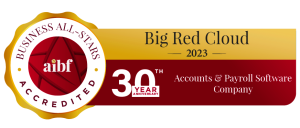To prevent a cash flow crisis in your business means you need to account for your incoming and outgoing financials. Remember cash flow is different to profit. While your business may generate large profits, this is not going to help if it is all tied in the business.
Cash flow can become a juggling act. It is all well and good if you can bill customers for a total of €30,000 in a month and your monthly outgoings are only €19,000. Your incoming payments more than cover the outgoings. But, it is not that easy when customers pay late and leave you cash poor. This can be enough to put you out of business.
Here are some things to help you prevent a cash flow crisis in your business.
Make Accurate Cashflow Forecasts
To track your finances, set targets for the next 12 months to avoid running out of cash. You can do this by assessing the last year’s income and sales as a guide. This works as long as you have not lost any large customers.
Use a good computer program to help you list monthly income and fixed costs. These can include wages and the costs of running the office. Remember to include variable costs such as electricity as well. Next calculate the cost of producing your goods and services, and stock. Update the figures when new orders come through.
Include cash reserves in your cashflow forecasts as you never know when an emergency arises. A breakdown in equipment or when times are slow are impossible to predict. You need to be ready for whatever emergency situations your business could face.
Do Not Delay Sending out Customer Invoices
Avoid treating invoicing as a tedious job or ignoring doing the bookwork. Small business owners can be so involved working in the business they neglect to keep up with the all-important bookkeeping. You need to stay organised.
It is important to invoice customers quickly. Send out invoices as soon as you complete the work or once a month for monthly for services. Using invoicing software cuts down the work and helps you to get paid quicker.
Give Customers Payment Options
Not everyone will want to pay using bank transfer. The more options you give them the more likely you are to receive quick payment. Cheques, cash, credit and debit cards as well as online and offline cash transfers are all handy options for customers to use.
Offer a Discount for Early Payment
While your payment terms may be a standard 30 days from the receipt of an invoice. Everyone likes to save money wherever they can. Consider offering a 5 percent discount when customers pay an account within 7 days.
Be Quick to Chase Overdue Payments
Be quick to chase overdue payments. Set out clear payment terms with your customers as soon as you start doing business with them. Using invoicing software helps you track payment dates and to identify late payments. Do not be afraid to be firm with people who always pay late.
The later people pay the more likely you are to never collect payment. Avoid this by sending out reminders for late payments. Escalate reminders if they continually miss payment dates. But you may need to get a debt collection agency involved if customers continue to ignore due dates on reminders.
Follow these simple tips to keep the cash flowing through your business.




